#montferrat
Text
Arslan Senki Reread
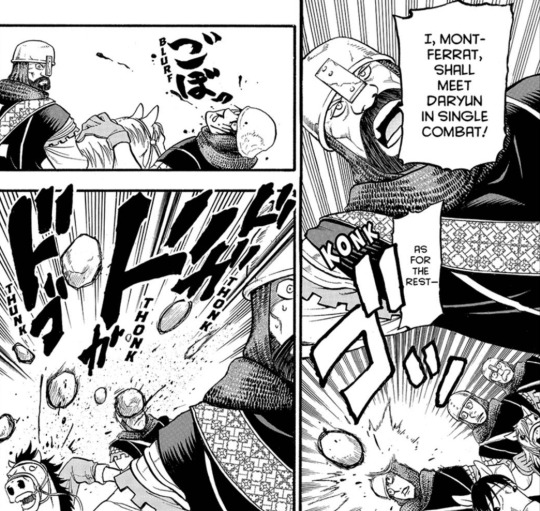
Maybe they got too used to Andragoras' way of Head-on Combat All The Time™ lol. I don't believe the main Lusitanian forces have fought against Team Arslan at this point? So they were expecting more raw, straightforward power from Team Arslan's end only for the latter to go... “hahaha, nope~ :3”
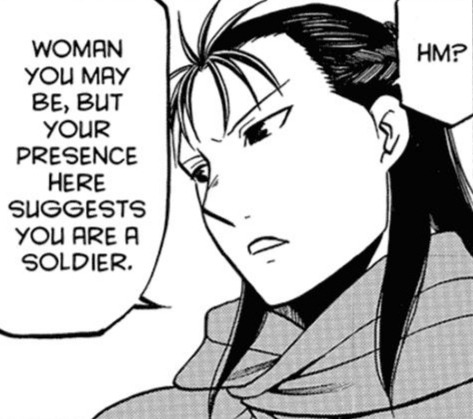
This line probably doesn't warrant this much overthinking but somehow it got me thinking about gender roles??
So in Pars, women in general... don't tend to have all that much freedom or power? They rarely travel (nobility, at least. maybe merchant families do travel a lot, I dunno), they don't hold military ranks, they can't be monarch, they also probably can't be de jure head of the household (even if they can hold de facto power and sway). Alfarīd and Farangis pretty much seem to be the exceptions, as far as I remember. I might be wrong, I was going off of some old spoilers post I read or smth like that, the topic of gender hasn't come up in the manga unfortunately.
And Lusitania... Etoile is the only soldier we see that was born a girl. And even then, Etoile had to “throw away their (female, original) name” and functionally become a boy in order to be able to enter the army. They're the only child of a knight family, it would be up to them to continue the family line if it came to it, the truth of their gender would've come up eventually, I assume they would still be allowed to their knighthood by that point in the far hypothetical future? Otherwise the whole shebang would kinda turn out pointless.
I wonder how things are in Turan. Jimsa didn't bat an eye at the female warriors in Arslan's entourage. Maybe like in Otoyomegatari, the women possessing some level of combat capabilities is fairly normal?

A preliminary flying Daryun! I won't be screencapping the end-of-the-chapter flying menace Daryun but this little thing was nice to spot.

Guiscard being indecisive. I don't blame him, he took the treasure with great pains, his provisions already got burned once.

Very good Guiscard face, LOL.

Hello, son-in-law— *silenced*
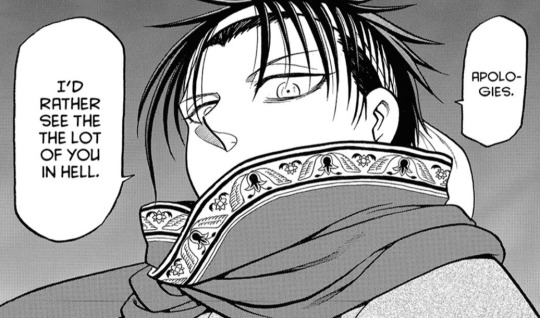

Gieve and matters of faith. He hates the Lusitanians, and would use any word to hit them the hardest. And he must hate the hypocrisy too, the same way he hates the hypocrisy of Pars' ruling class. I like to think he has a romantic heart, but got disillusioned with the world due to... well, it's not exactly hard to be disillusioned with Pars' society the way it is.
It was Arslan in the end, who started to revive that small buried part of Gieve.
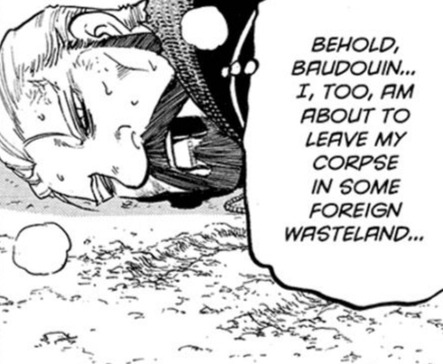
He questioned the validity of what the Lusitanians were doing while Baudouin fully endorsed it— and the latter died first. His narrative karma caught up to him, as I like to see it. (I think @innerchorus had a similar train of thought but w Kubard and Shapur?) Montferrat did question it but... he also kept upholding it.
For what it's worth though, the battlefield wasn't a complete wasteland, and he at least got to die with a smile on his face and with a tiny flower persevering despite it all as his last sight.

You did loot Parsian treasures the first time around during the chaos, you jackass.
#arslan senki reread#arslan senki#the heroic legend of arslan#heroic legend of arslan#montferrat#jimsa#etoile#estelle#daryun#guiscard#merlaine#merlain#merlane#gieve
8 notes
·
View notes
Text
The way Gieve fights that duel, though.

The horse kick? Novel canon.

Cutting the reins like that? Not novel canon.
And that’s what decided the outcome. So I thought that was quite an interesting change. Not sure how I feel about Gieve’s words to Montferrat after this. His death had more impact on me than I expected, and I’m still digesting it. I feel like we saw the essence of Montferrat’s character there.
32 notes
·
View notes
Photo

Guiscard and Montferrat chapter 110 meme template
thank you, @meridiageek !
31 notes
·
View notes
Text
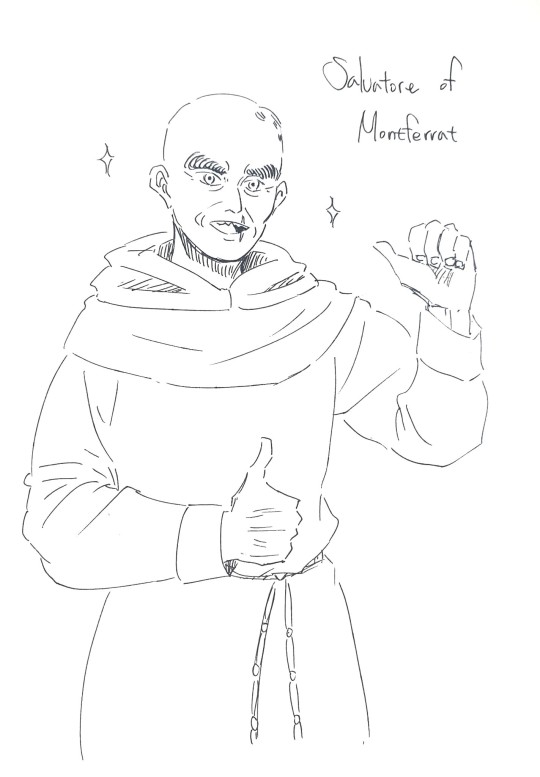


a bunch of monks
23 notes
·
View notes
Text
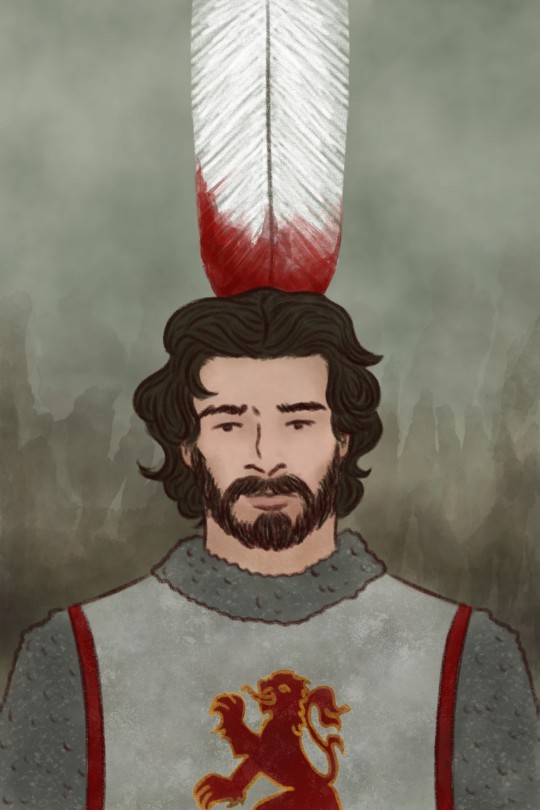
Crusade
#codextober#assassin's creed fanart#(barely)#its Conrad of Montferrat who they ended up not using as a target for AC1 cos he didnt die in the right year#blood
1 note
·
View note
Text
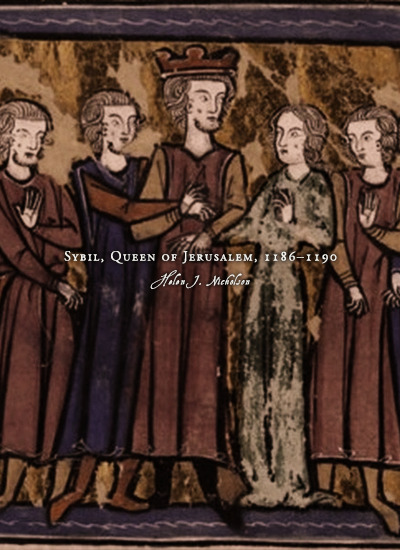


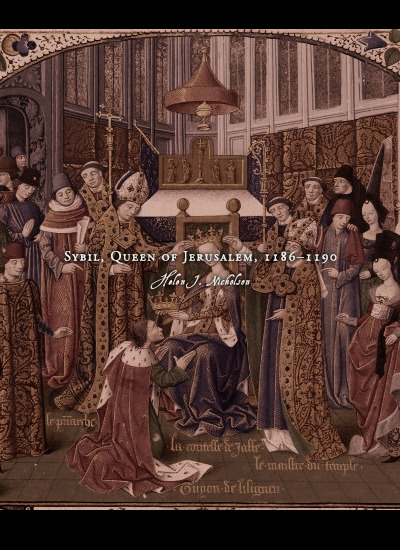
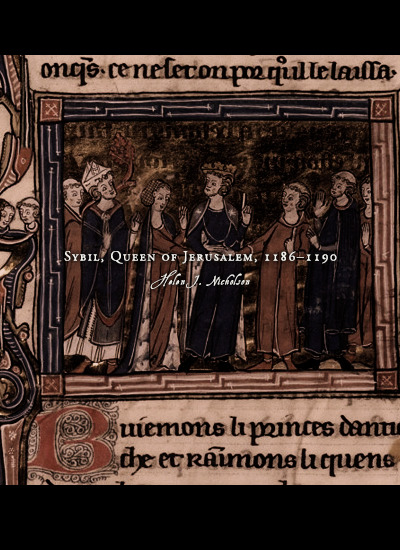

Favorite History Books || Sybil, Queen of Jerusalem, 1186–1190 by Helen J. Nicholson ★★★★☆
As a child, Sybil’s future prospects appeared excellent: as the eldest child of King Amaury of Jerusalem and as a member of the dynasty that claimed descent from Godfrey de Bouillon and the other heroes of the First Crusade, we might expect that she would have been an attractive marriage prospect. Yet European noblemen did not queue up to seek her hand. One reason for this might have been that commanding the defence of the kingdom of Jerusalem in the face of aggressive Muslim expansionism was a daunting prospect for any warrior, no matter how ambitious. Moreover, as her brother Baldwin’s illness became generally known in Europe, Sybil’s potential husbands may have wondered whether she and her children would be similarly afflicted. In addition, as her brother Baldwin and his council made clear to Philip of Alsace in autumn 1177, outside aid was unwelcome in the kingdom except on the terms they dictated. Robert VI of Béthune, Philip of Alsace’s candidate for Sybil’s hand, might have made a more effective count of Jaffa and Ascalon, regent of the kingdom and king consort than Guy de Lusignan, but Baldwin – aged only sixteen at the time of Count Philip’s crusade – preferred to marry his sister to a man he knew.
If King Baldwin IV had supported his elder sister as the heir who – given that Baldwin V was very young and in uncertain health – would almost certainly inherit the kingdom, it might have been possible for Sybil to unite the nobles of the kingdom behind her as her brother had done. But his contradictory and changing policies left her rights of inheritance unclear and the nobles of the kingdom divided. He married her to one of his household knights, then attempted to divorce them; he appointed her husband as procurator, then shortly afterwards deposed him and appointed her son as his co- ruler, and then appointed another procurator, then finally appointed two regents, one to care for the young king Baldwin V and the other to govern. If he made further arrangements for the succession after Baldwin V they were unworkable. By marrying his younger half-sister to a leading noble of the kingdom but forcing the bridegroom to surrender his inherited estates in return, King Baldwin IV ensured that both his sisters and their husbands and supporters had grievances against him. While his measures reduced any threat that he would be overthrown during his lifetime, they boded badly for the kingdom after the death of his immediate heir.
Given the rivalries between the leading nobles of the kingdom and Saladin’s need to win a decisive victory over the Franks, no one could have prevented Saladin from taking Jerusalem and conquering most of Sybil’s kingdom; Sybil was doomed to failure as queen. Not only did she lose Jerusalem, but she also failed in the most fundamental function of a noblewoman: she failed to provide an heir for herself, as both her son Baldwin and her daughters died in childhood. On the other hand, in the face of disaster she did not abandon her kingdom and flee to Europe, nor did she retire to a religious house. Instead, she stayed in the crusader states and did all she could to oppose the invader. She tried to defend Ascalon, she remained in Jerusalem until it was surrendered to Saladin, she obtained her husband’s release from Saladin’s prison, and by accompanying him in the months that followed she gave him the authority to continue as king of Jerusalem. As husband of the eldest daughter of King Amaury of Jerusalem and as a crowned king, Guy had a stronger claim to royal authority than Conrad of Montferrat: crusaders from Europe rallied to him and the representatives of the Italian maritime cities supported him so that he could begin the fightback against Saladin which was continued by the Third Crusade and enabled the kingdom of Jerusalem to continue to exist until 1291. When Sybil died, Guy’s authority died with her; but she had ensured that her kingdom would not die, at least for another century.
#historyedit#litedit#sibylla of jerusalem#french history#medieval#asian history#european history#women's history#history#house of anjou#history books
49 notes
·
View notes
Text
To get out of the art block in a different way, I decided to make a challenge for myself
Nine days and nine goals of Altair
Tamir
Abu'l Nuqoud
Garnier de Naplouze
Talal
Majd ad-Din
William of Montferrat
Sibrand
Jubair al Hakim
Robert de Sable
11 notes
·
View notes
Text
I honestly loved Monferrat's death. I knew he had to die, but he was given so much respect by the manga. The way he doubts for a moment, searching for the meaning of his faith in a bloody battlefield, only to find an unmarred flower to hold on ti? *chef's kiss*

ID: five panels from the Arslan Senki manga. The first thrre panel shows Montferrat's eyes, then a picture of a flower, and his eyes widening at the sight. In the next panel, he cutches his religious necklace, and in the last panel a show from above shoes his hand going limp and falling near the flower. END ID
29 notes
·
View notes
Note
can I still ask for a fun fact :3c
Europe has always been among the cringiest places on the planet, and uh.
Crusades? Yeah. Let’s talk about the Third Crusade aka the Kings’ Crusade, but specifically about how it started out because ooooooh boy
So the Crusades, for anyone unfamiliar, were basically a bunch of wars between Western Europe and the guys living in what they called the Holy Land, aka modern-day Israel and Palestine and the areas around there. See, Jerusalem was being held by an Islamic empire, and Europe fucking HATED that, so they got on a bunch of boats and went to terrorize the Middle East because that’s white people’s historically-proven cultural pastime
The Third Crusade came off of the Second Crusade, which the Zengid Dynasty wound up winning. The Europeans were pissed, so they headed off on their third attempt at retaking the Holy Land
Our first king is Holy Roman Emperor Frederick Barbarossa. He had a pretty good run, all things considered, getting all the way from what we now call Germany clear to what is now Turkey at the ripe old age of 66. He won several battles, lost a few, fucked with the Byzantines, and devastated Turkish forces.
That sounds like a win, right?
Well, it was, but then his horse slipped in a river somewhere in Turkey and he fucking died. His son, another Frederick, was so bad at getting his dad’s bones to Acre and everything that he had to outsource help to this dude called Conrad of Montferrat, who was technically the King of Jerusalem, but he himself would get assassinated by the Assassins (and they were assassins) literal days before his crowning
Our second king is Philip II of France, who is legit so unremarkable in terms of the Crusades that most of his involvement in them is him leaving them after getting dysentery and almost dying after being Very Bad At Crusading
Our third king is the only semi-competent one, Richard I of England, aka Richard the Lionheart, and he’s technically our fourth king because it was the king before him, Henry II, that tried the whole Crusade Thing before dying in a tragically British fashion. So we’ve got Richard, and he’s the only king here who actually managed to get to the Holy Land.
At first, Richard and Philip were at war. And then they said “hey wait let’s go just beat up Muslims instead”. And then they said “I hate you more than Muslims actually” and they started beating each other up, hence why Philip ended up leaving in the end.
Drama Happens! There’s some whole bullshit regarding marriage and then that dude from earlier, Conrad, because, guess what? Richard might’ve been the one to send the Assassins after that dude. Omg!!
But honestly? Not much to say about Richard. He did his (terrible horrible racist) job, and he won the Third Crusade. Sort of.
Well, Europe didn’t end up taking back Jerusalem. They would not, in fact, get Jerusalem back… ever! They had it for like two minutes during the Sixth Crusade, but they still don’t have control over the Holy Land to this day, much to their obvious annoyance
What happened with the two living kings? Well, they went back to war, of course! Richard would eventually die in an extremely comical and tragic and British fashion, getting killed by an arrow fired by a literal child. Philip would eventually die of Being Too Hot because he went traveling in the middle of summer while being pathetic and middle aged and French
12 notes
·
View notes
Text
Wives and Daughters of Byzantine Emperors: Ages at First Marriage
I have only included women whose birth dates and dates of marriage are known within at least 1-2 years, therefore, this is not a comprehensive list.
Theodora, wife of Justinian I; age 35 when she married Justinian in 435 AD
Constantina, wife of Maurice; age 22 when she married Maurice in 582 AD
Eudokia, wife of Heraclius; age 30 when she married Heraclius in 610 AD
Fausta, wife of Constans II; age 12 when she married Constans in 642 AD
Maria of Amnia, wife of Constantine VI; age 18 when she married Constantine in 788 AD
Theodote, wife of Constantine VI; age 15 when she married Constantine in 795 AD
Euphrosyne, wife of Michael II; age 33 when she married Michael in 823 AD
Theodora, wife of Theophilos; age 15 when she married Theophilos in 830 AD
Eudokia Dekapolitissa, wife of Michael III; age 15 when she married Michael in 855 AD
Eudokia Ingerina, wife of Basil I; age 25 when she married Basil in 865 CE
Theophano Martinakia, wife of Leo VI; age 16/17 when she married Leo in 882/883 AD
Helena Lekapene, wife of Constantine VII; age 9 when she married Constantine in 919 AD
Theodora, wife of John I Tzimiskes; age 25 when she married John in 971 AD
Theophano, wife of Romanos II (and later Nikephoros II); age 14 when she married Romanos in 955 AD
Anna Porphyrogenita, daughter of Romanos II; age 27 when she married Vladimir in 990 AD
Zoe Porphyrogenita, wife of Romanos III (and later Michael IV & Constantine IX); age 50 when she married Romanos in 1028 AD
Eudokia Makrembolitissa, wife of Constantine X Doukas (and later Romanos IV Diogenes); age 19 when she married Constantine in 1049 AD
Maria of Alania, wife of Michael II Doukas (and later Nikephoros III Botaniates); age 12 when she married Michael in 1065 AD
Irene Doukaina, wife of Alexios I Komnenos; age 11 when she married Alexios in 1078 AD
Anna Komnene, wife of Nikephoros Bryennios the Younger; age 14 when she married Nikephoros in 1097 AD
Maria Komnene, daughter of Alexios I Komnenos; age 14/15 when she married Nikephoros Katakalon in 1099/1100 AD
Eudokia Komnene, daughter of Alexios Komnenos; age 15 when she married Michael Iasites in 1109 AD
Theodora Komnene, daughter of Alexios Komnenos; age 15 when she married Constantine Kourtikes in 1111 AD
Maria of Antioch, wife of Manuel I Komnenos; age 16 when she married Manuel in 1161 AD
Euphrosyne Doukaina Kamatera, wife of Alexios III Angelos; age 14 when she married Alexios in 1169 AD
Maria Komnene, daughter of Manuel I Komnenos; age 27 when she married Renier of Montferrat in 1179 AD
Anna of France, wife of Alexios II Komnenos (and later Andronikos Komnenos); age 9 when she married Alexios in 1180 AD
Eudokia Angelina, daughter of Alexios III Angelos; age 13 when she married Stefan Nemanjic in 1186 AD
Margaret of Hungary, wife of Isaac II Angelos; age 11 when she married Isaac in 1186 AD
Anna Komnene Angelina, daughter of Alexios III Angelos; age 14 when she married Isaac Komnenos Vatatzes in 1190 AD
Irene Angelina, daughter of Isaac II Angelos; age 16 when she married Philip of Swabia in 1197 AD
Philippa of Armenia, wife of Theodore I Laskaris; age 31 when she married Theodore in 1214 AD
Maria of Courtenay, wife of Theodore I Laskaris; age 15 when she married Theodore in 1219 AD
Maria Laskarina, daughter of Theodore I Laskaris; age 12 when she married Bela IV of Hungary in 1218 AD
Elena Asenina of Bulgaria, wife of Theodore II Laskaris; age 11 when she married Theodore in 1235 AD
Anna of Hohenstaufen, wife of John III Doukas Vatatzes; age 14 when she married John in 1244 AD
Theodora Palaiologina, wife of Michael VIII Palaiologos; age 13 when she married Michael in 1253 AD
Anna of Hungary, wife of Andronikos II Palaiologos; age 13 when she married Andronikos in 1273 AD
Eudokia Palaiologina, daughter of Michael VIII Palaiologos; age 17 when she married John II Megas Komnenos in 1282 AD
Irene of Montferrat, wife of Andronikos II Palaiologos; age 10 when she married Andronikos in 1284 AD
Rita of Armenia, wife of Michael IX Palaiologos; age 16 when she married Michael in 1294 AD
Simonis Palaiologos, daughter of Andronikos II Palaiologos; age 5 when she married Stefan Milutin in 1299 AD
Irene of Brunswick, wife of Andronikos III Palaiologos; age 25 when she married Andronikos in 1318 AD
Anna of Savoy, wife of Andronikos III Palaiologos; age 20 when she married Andronikos in 1326 AD
Irene Palaiologina, daughter of Andronikos III Palaiologos; age 20 when she married Basil of Trebizond in 1335 AD
Maria-Irene Palaiologina, daughter of Andronikos III Palaiologos; age 9 when she married Michael Asen IV of Bulgaria in 1336 AD
Theodora Kantakouzene, daughter of John VI Palaiologos; age 16 when she married Orhan Gazi in 1346 AD
Helena Kantakouzene, wife of John V Palaiologos; age 13 when she married John in 1347 AD
Keratsa of Bulgaria, wife of Andronikos IV Palaiologos; age 14 when she married Andronikos in 1362 AD
Helena Dragas, wife of Manuel II Palaiologos; age 20 when she married Manuel in 1392 AD
Anna of Moscow, wife of John VIII Palaiologos; age 21 when she married John in 1414 AD
Maria Komnene, wife of John VIII Palaiologos; age 23 when she married John in 1427 AD
Helena Palaiologina, daughter of Theodore II Palaiologos; age 14 when she married John II of Cyprus in 1442 AD
Helena Palaiologina, daughter of Thomas Palaiologos; age 15 when she married Lazar Brankovic in 1446 AD
Sophia Palaiologina, daughter of Thomas Palaiologos; age 23 when she married Ivan III of Russia in 1472 AD
The average age at first marriage was 17 years old.
6 notes
·
View notes
Text
Arslan Senki Reread

This reminded me of...

This Arslan panel for some reason! (Two sons eager to absorb tactics! Maybe it wasn't too far a jump making them brothers in my AU— though even without justification I would've done it anyways lol)

Very interesting contrast against Arslan's leadership. I would say more but my brain is scrambled. I probably should go to sleep.

Did this bird just fucking nod?
I swear, I swear to fucking god, Azrael has more intelligence than is normal, I tell you.

Narsus sounds like such a mischievous little shit, lol.
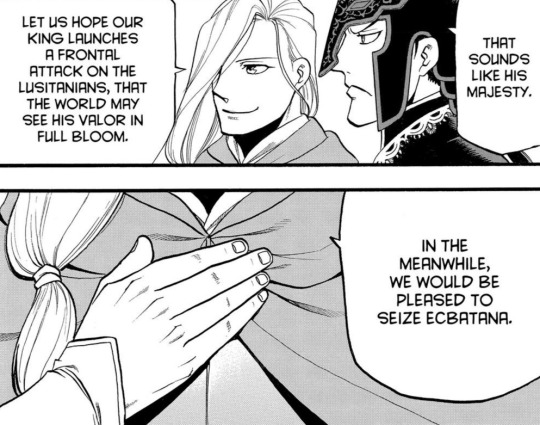
Aka: let Andycakes make a show of himself, we'll just, uh, take actual control of everything while he's busy posturing :)))))

Arslan's such a menace! I'm so proud of him! He is learning from Grade A+ menaces after all, “Fuck It Why Not” Daryun and “Fuck You That's Why” Narsus and “Fuck Everything Both Literally And Figuratively” Gieve and... you get the point. No wonder he's Like This™.

Absolutely eerie face that makes me feel queasy. He has to know this can't end well, right? He has to know the poor dude (I forget his name) isn't gonna have a good time, right? That he'd be hated? He just... doesn't care.

Oh, my guy, if only you knew...
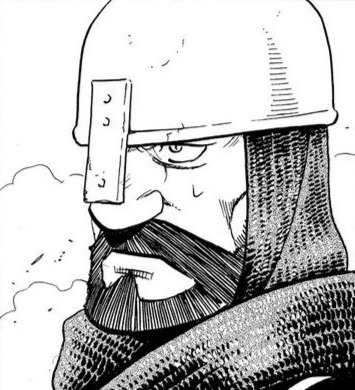
Montferrat has a bad feeling about this. He Knows™.
#arslan senki reread#arslan senki#the heroic legend of arslan#heroic legend of arslan#isfan#kishward#arslan#guiscard#azrael#narsus#daryun#montferrat
7 notes
·
View notes
Photo
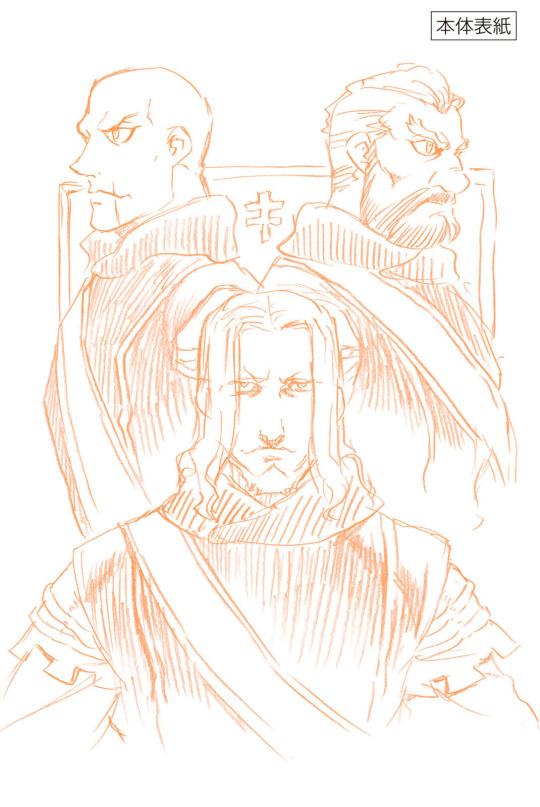
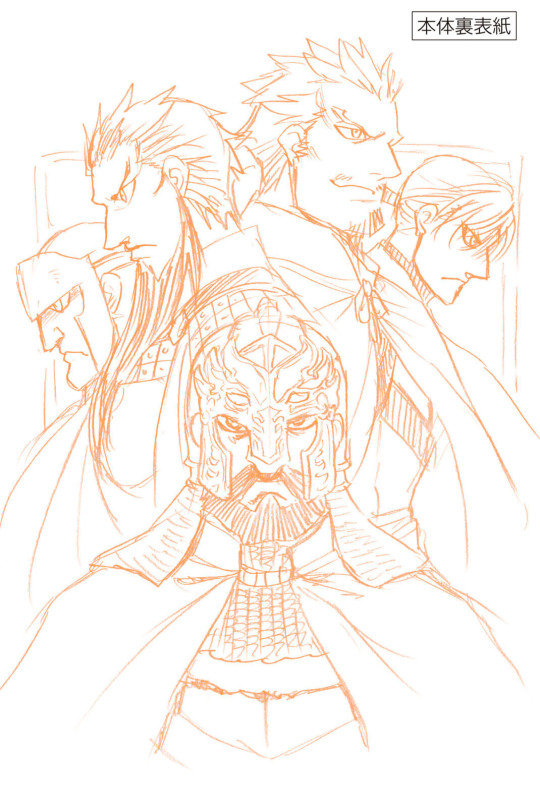
Good quality scans of the bonus sketches from Volume 18 of the manga!
#arslan senki#the heroic legend of arslan#guiscard#baudoin#montferrat#andragoras#tus#kishward#kubard#isfan
22 notes
·
View notes
Text
Baldwin IV of Jerusalem: "The Leper King"

Baldwin IV, more commonly known as the "Leper King", was King of Jerusalem from 1174 until his untimely death in 1185. He was admired for his willpower and dedication to the Latin Kingdom, even while suffering from the damaging effects of leprosy, which would eventually leave him blind and unable to use either his hands or feet.
Baldwin would develop the first symptoms of leprosy - an infection caused by slow-growing bacteria called Mycobacterium leprae - but a diagnosis was avoided at the time due to the stigma of the disease. He would eventually be diagnosed after his accession to the throne on the death of his father, King Amalric.
Count Raymond III of Tripoli would rule the kingdom in Baldwin's name until he reached the age of majority in 1176. Soon after he became King, Baldwin planned an invasion of Egypt, which would quite quickly fall through due to the uncooperativeness of his vassals. Saladin would in turn attack Baldwin's kingdom in 1177, but would be repelled by the king and the nobleman Raynald of Châtillon at Montgisard, earning Baldwin much fame.
The young king would master horse riding despite gradually losing sensation in his extremities and was able to fight in battles until his later years.
Leprosy excluded Baldwin from ever marrying. He hoped to abdicate (renounce one's throne) when his sister, Sibylla, married William of Montferrat in 1176, but William would die not long after.
In 1180, to prevent a coup (seizure of power from a government) by Count Raymond III of Tripoli and Prince Bohemond III of Antioch, Baldwin married Sibylla to Guy of Lusignan. Guy was disliked by much of the nobility, and would impair his relationship with Baldwin. The internal discord that would follow forced Baldwin to remain king, as only he was able to quiet the arguing among the nobility.
Baldwin would again repel Saladin in 1182, but by then leprosy had taken his ability to see, walk, or use his hands in 1183. He disinherited Guy and had Sibylla's son, Baldwin V, crowned co-king before having himself taken to lift Saladin's siege of Kerak. Baldwin failed to have Sibylla's marriage to Guy annulled and Guy's fief of Ascalon confiscated.
In early 1185, he arranged for Raymond to rule as regent for Sibylla's son and died before May 16.
------ ------ ------ ------ ------ ------ ------ ------ ------ ------ ------ -----
Author's Note: If you have any questions regarding the content in this post, please feel free to reach out to me through the comments section of PMs!
Art Credit: Hellkrusher on Deviantart https://www.deviantart.com/hellkrusher
38 notes
·
View notes
Text
for 7 months philip was so insanely paranoid about being assassinated that to get rid of his evergrowing anxiety (which made him create a special guard for his personal safety and go around wearing armour) he literally SENT A LETTER TO THE ORDER OF THE ASSASSINS asking "hey ive heard some rumours about what you did to the marquis of montferrat. is it true richard paid you to kill me as well" and the order of the assassins wrote back the arabic equivalent of "?????????????????????"
33 notes
·
View notes
Text
“As you know, my Chief Counsellor believes a rescue attempt is far too risky,” he said. “Happily, I don’t know what that word means. We leave tonight. We tell only Ellery and Montferrat. Gods willing we shall return with our Captain in less time than it took Needa.”
“To do that we need more than just horses, Your Grace,” Aiden said, quivering like a hound on a leash. Anakin understood his eagerness. The boys loved Piett. He was not merely a military superior but ‘Uncle Firmus’ to them both and they had stormed about in the white hot rage of the young when his absence had been confirmed.
“Indeed,” Anakin agreed. “Which is why you shall ride with me on Thraia. Veers, you shall ride the Lady, if she permits. You and I both know Thunder cannot come. He is hardly…subtle.”
Veers sighed, but shrugged in agreement. Anakin would leave him to settle things with his Imphantus familiar.
“And Boreas, of course, is plenty fast for such a journey,” Zev stated proudly. Aiden rolled his eyes. His brother’s familiar was a glorious chesnut stallion, faster than any horse alive.
“Thank you, Your Grace,” Veers said, the battle light already in his grey eyes.
Anakin gripped his hand. “Piett is my friend too,” he said simply.
#star wars#star wars original trilogy#star wars au#firmus piett#admiral piett#leia organa#sola naberrie#luke skywalker#anakin skywalker#maximilian veers#general veers#zevulon veers#padme amidala#palpatine#fantasy au#mages#magic#familiars#the Lady is a griffon#angst#romance#friendship#fan fiction
4 notes
·
View notes
Photo
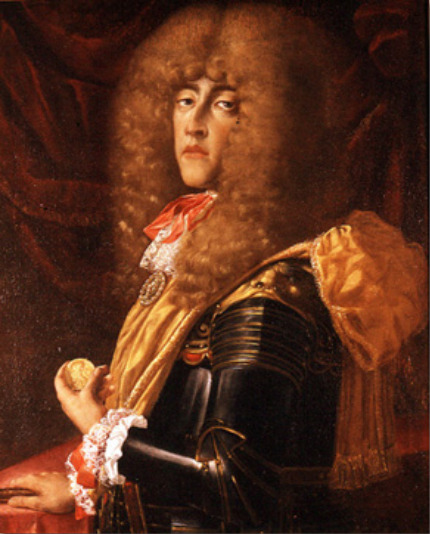
Attributed to Frans Geffels - Portrait of Charles IV, Duke of Mantua (1652-1708) -
oil on canvas, height: 98 cm (38.5 in); width: 82 cm (32.2 in)
Palazzo d'Arco, Mantua, Italy
Ferdinando Carlo Gonzaga (31 August 1652 – 5 July 1708) was the only child of Duke Charles II of Mantua and Montferrat, and the last ruler of the Duchy of Mantua of the House of Gonzaga.
Frans Geffels, known in Italy as Francesco Geffels (25 August 1624 – 18 February 1694) was a Flemish painter, printmaker, architect, stage designer and designer of ephemeral structures for solemn and festive occasions. After training in his native Antwerp, he was mainly active in Mantua, where he was prefetto delle fabbriche to the Duke, a role that gave him the direction of the artistic and construction activities undertaken by the Ducal court. He worked also on projects for the local aristocratic class of Mantua. In addition, he completed projects for the Liechtenstein princes and for the imperial court in Vienna.
He was both a canvas and fresco painter. He created portraits, history subjects, military scenes, architectural scenes and genre art, in particular merry companies. Geffels is mainly remembered as the designer of some of the key examples of Baroque architecture in Mantua.
13 notes
·
View notes